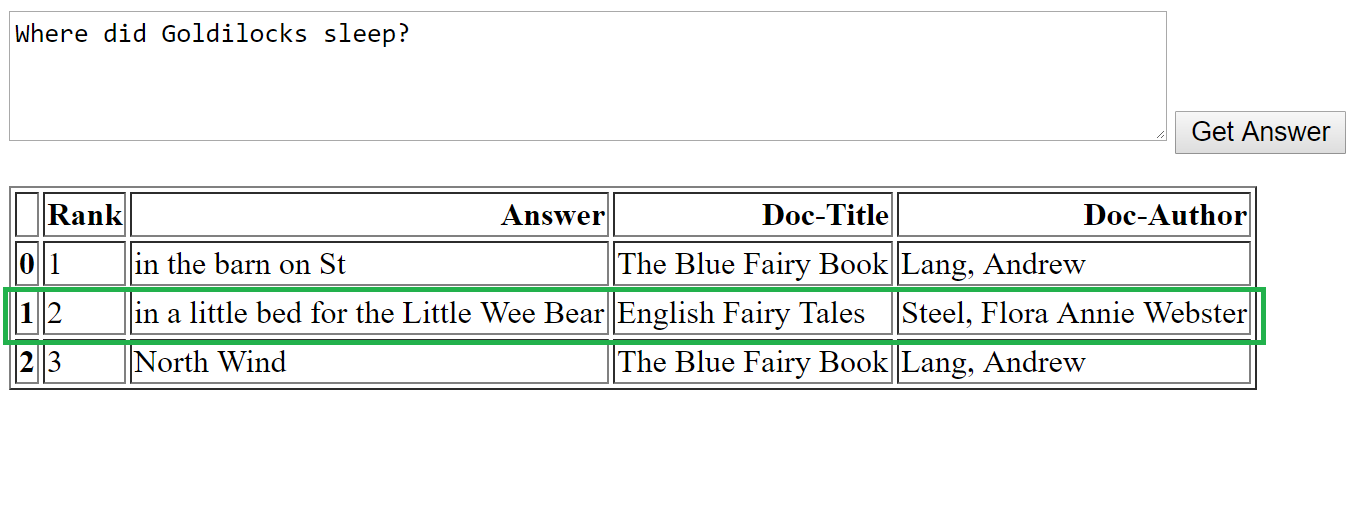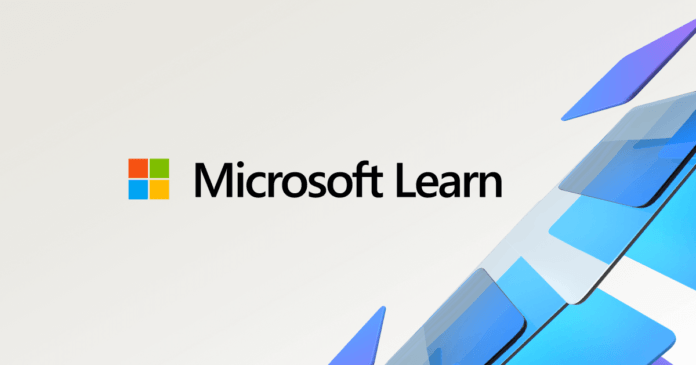This submit is authored by Anusua Trivedi, Senior Knowledge Scientist at Microsoft.
This submit builds on the MRC Weblog the place we mentioned how machine studying comprehension (MRC) can assist us “switch be taught” any textual content. On this submit, we introduce the notion of and the necessity for machine studying at scale, and for switch studying on giant textual content corpuses.
Introduction
Machine studying for query answering has turn out to be an vital testbed for evaluating how nicely laptop techniques perceive human language. It is usually proving to be a vital expertise for functions akin to engines like google and dialog techniques. The analysis group has just lately created a large number of large-scale datasets over textual content sources together with:
- Wikipedia (WikiReading, SQuAD, WikiHop).
- Information and newsworthy articles (CNN/Day by day Mail, NewsQA, RACE).
- Fictional tales (MCTest, CBT, NarrativeQA).
- Basic net sources (MS MARCO, TriviaQA, SearchQA).
These new datasets have, in flip, impressed a fair wider array of recent query answering techniques.
Within the MRC weblog submit, we skilled and examined completely different MRC algorithms on these giant datasets. We have been in a position to efficiently switch be taught smaller textual content excepts utilizing these pretrained MRC algorithms. Nonetheless, once we tried making a QA system for the Gutenberg e-book corpus (English solely) utilizing these pretrained MRC fashions, the algorithms failed. MRC often works on textual content excepts or paperwork however fails for bigger textual content corpuses. This leads us to a more recent idea – machine studying at scale (MRS). Constructing machines that may carry out machine studying comprehension at scale could be of nice curiosity for enterprises.
Machine Studying at Scale (MRS)
As an alternative of specializing in solely smaller textual content excerpts, Danqi Chen et al. got here up with an answer to a a lot greater downside which is machine studying at scale. To perform the duty of studying Wikipedia to reply open-domain questions, they mixed a search element primarily based on bigram hashing and TF-IDF matching with a multi-layer recurrent neural community mannequin skilled to detect solutions in Wikipedia paragraphs.
MRC is about answering a question a few given context paragraph. MRC algorithms usually assume {that a} brief piece of related textual content is already recognized and given to the mannequin, which isn’t life like for constructing an open-domain QA system.
In sharp distinction, strategies that use data retrieval over paperwork should make use of search as an integral a part of the answer.
MRS strikes a steadiness between the 2 approaches. It’s centered on concurrently sustaining the problem of machine comprehension, which requires the deep understanding of textual content, whereas preserving the life like constraint of looking out over a big open useful resource.
Why is MRS Vital for Enterprises?
The adoption of enterprise chatbots has been quickly growing in latest instances. To additional advance these situations, analysis and business has turned towards conversational AI approaches, particularly in use circumstances such as banking, insurance coverage and telecommunications, the place there are giant corpuses of textual content logs concerned.
One of many main challenges for conversational AI is to grasp complicated sentences of human speech in the identical manner people do. The problem turns into extra complicated when we have to do that over giant volumes of textual content. MRS can handle each these issues the place it could actually reply goal questions from a big corpus with excessive accuracy. Such approaches can be utilized in real-world functions like customer support.
On this submit, we wish to consider the MRS method to unravel computerized QA functionality throughout completely different giant corpuses.
Coaching MRS – DrQA Mannequin
DrQA is a system for studying comprehension utilized to open-domain query answering. DrQA is particularly focused on the activity of machine studying at scale. On this setting, we’re looking for a solution to a query in a probably very giant corpus of unstructured paperwork (which is probably not redundant). Thus, the system should mix the challenges of doc retrieval (i.e. discovering related paperwork) with that of machine comprehension of textual content (figuring out the solutions from these paperwork).
We use Deep Studying Digital Machine (DLVM) because the compute surroundings with two NVIDIA Tesla P100 GPU, CUDA and cuDNN libraries. The DLVM is a specifically configured variant of the Knowledge Science Digital Machine (DSVM) that makes it extra simple to make use of GPU-based VM situations for coaching deep studying fashions. It’s supported on Home windows 2016 and the Ubuntu Knowledge Science Digital Machine. It shares the identical core VM photographs – and therefore the identical wealthy toolset – because the DSVM, however is configured to make deep studying simpler. All of the experiments have been run on a Linux DLVM with two NVIDIA Tesla P100 GPUs. We use the PyTorch backend to construct the fashions. We pip put in all of the dependencies within the DLVM surroundings.
We fork the Fb Analysis GitHub for our weblog work and we prepare the DrQA mannequin on SQUAD dataset. We use the pre-trained MRS mannequin for evaluating our giant Gutenberg corpuses utilizing switch studying strategies.
Youngsters’s Gutenberg Corpus
We created a Gutenberg corpus consisting of about 36,000 English books. We then created a subset of Gutenberg corpus consisting of 528 youngsters’s books.
Pre-processing the kids’s Gutenberg dataset:
- Obtain books with filter (e.g. youngsters, fairy tales and so on.).
- Clear the downloaded books.
- Extract textual content knowledge from e-book content material.
Learn how to Create a Customized Corpus for DrQA to Work?
We comply with the directions accessible right here to create a appropriate doc retriever for the Gutenberg Youngsters’s books.
To execute the DrQA mannequin:
- Insert a question within the UI and click on the search button.
- This calls the demo server (flask server working within the backend).
- The demo code initiates the DrQA pipeline.
- DrQA pipeline elements are defined right here.
- The query is tokenized.
- Primarily based on the tokenized query, the doc retriever makes use of Bigram hashing + TF-IDF matching to match probably the most paperwork.
- We retrieve the highest 3 matching paperwork.
- The Doc Reader (a multilayer RNN) is then initiated to retrieve the solutions from the doc.
- We use a pretrained mannequin on the SQUAD Dataset.
- We do switch studying on the Youngsters’s Gutenberg dataset. You possibly can obtain the pre-processed Gutenberg Youngsters’s E-book corpus for the DrQA mannequin right here.
- The mannequin embedding layer is initiated by pretrained Stanford CoreNLP embedding vector.
- The mannequin returns probably the most possible reply span from every of the highest 3 paperwork.
- We are able to pace up the mannequin efficiency considerably by way of data-parallel inference, utilizing this mannequin on a number of GPUs.
The pipeline returns probably the most possible reply checklist from the highest three most matched paperwork.
We then run the interactive pipeline utilizing this skilled DrQA mannequin to check the Gutenberg Youngsters’s E-book Corpus.
For surroundings setup, please comply with ReadMe.md in GitHub to obtain the code and set up dependencies. For all code and associated particulars, please discuss with our GitHub hyperlink right here.
MRS Utilizing DLVM
Please comply with comparable steps listed on this pocket book to check the DrQA mannequin on DLVM.
Learnings from Our Analysis Work
On this submit, we investigated the efficiency of the MRS mannequin on our personal customized dataset. We examined the efficiency of the switch studying method for making a QA system for round 528 youngsters’s books from the Undertaking Gutenberg Corpus utilizing the pretrained DrQA mannequin. Our analysis outcomes are captured within the reveals beneath and within the clarification that follows. Word that these outcomes are explicit to our analysis situation – outcomes will differ for different paperwork or situations.




Within the above examples, we tried questions starting with What, How, Who, The place and Why – and there’s an vital side about MRS that’s value noting, specifically:
- MRS is greatest fitted to “factoid” questions. Factoid questions are about offering concise information. E.g. “Who’s the headmaster of Hogwarts?” or “What’s the inhabitants of Mars”. Thus, for the What, Who and The place sorts of questions above, MRS works nicely.
- For non-factoid questions (e.g. Why), MRS doesn’t do an excellent job.
The inexperienced field represents the right reply for every query. As we see right here, for factoid questions, the solutions chosen by the MRS mannequin are in step with the right reply. Within the case of the non-factoid “Why” query, nonetheless, the right reply is the third one, and it’s the one one which makes any sense.
Total, our analysis situation reveals that for generic giant doc corpuses, the DrQA mannequin does job of answering factoid questions.
Anusua
@anurive | E mail Anusua at antriv@microsoft.com for questions pertaining to this submit.

